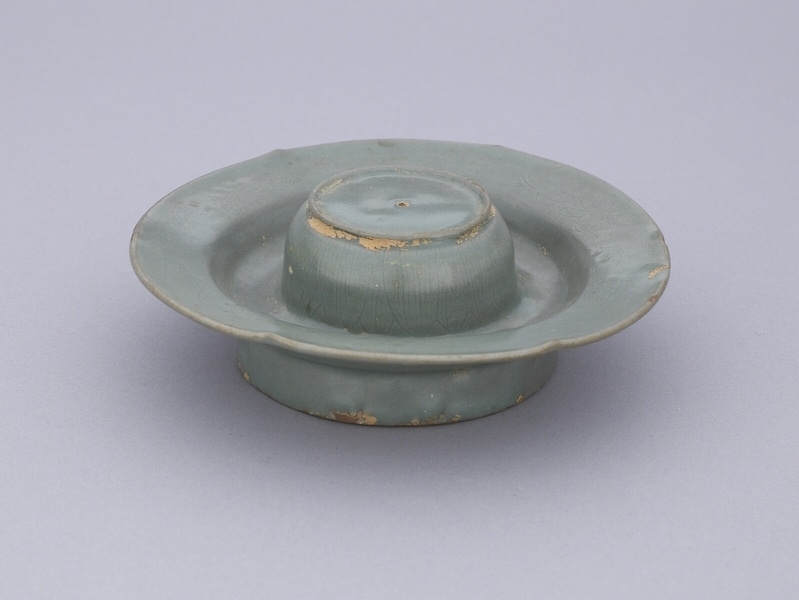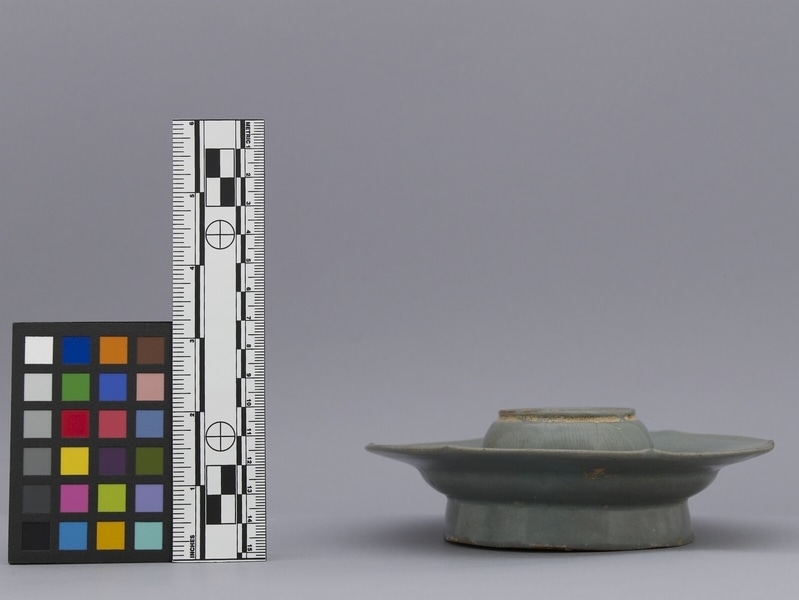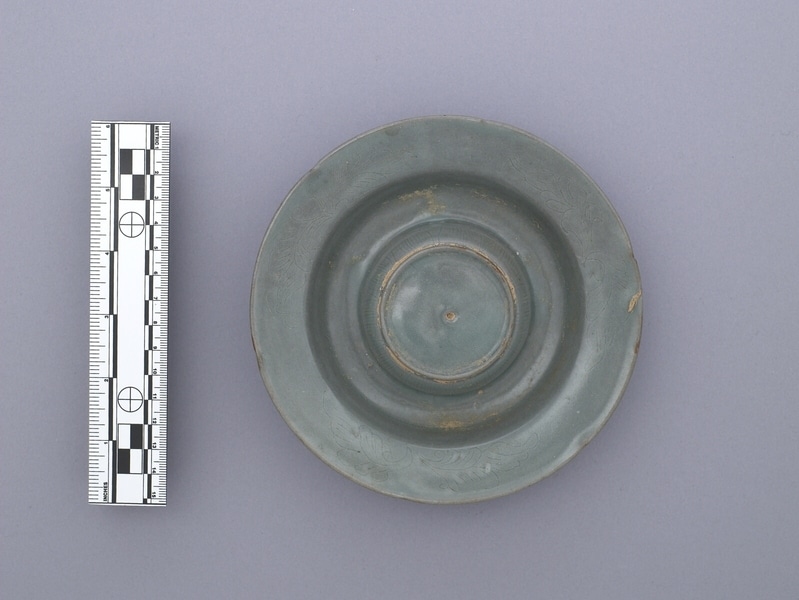Cup Stand Item Number: N3.90 from the MOA: University of British Columbia



Description
Celadon cup stand with raised centre, and downward-facing lotus petal design around rim and raised centre. Outside of rim is slightly lobed at regular intervals to represent a flower shape. Unmarked.
History Of Use
The jantak (잔탁; 盞托; cup stand) like these were used during the Goryeo dynasty of Korea (918–1392). Jantak were made of various materials such as clay, metal or wood; this type was used as a stand for a small cup – usually a flower shaped cup – containing tea or wine. A set of jantak and cup with the same decorated pattern is called takjan (탁잔; 托盞; cup and stand). All kinds of pottery and porcelain produced during the Goryeo dynasty (고려; 高麗; 918–1392) are called Goryeo dojagi (Goryeo ware; 고려도자기; 高麗陶磁器), and celadon (green-gray glazed ceramic) known as Goryeo cheongja (고려청자; 高麗青磁) was the main kind of ceramics produced during this period in Korea. Celadon originated in China, and Goryeo potters learned the techniques from the celadon traditions of Song dynasty (960–1279) of China. The Buan (부안군) and Gangjin (강진군) regions in Jeolla Province (전라도) became the major production centre by the mid-twentieth century, and Gangjin remains the centre of revivals of Goryeo cheongja and modern celadon production. Tea was introduced to Korea during the Tang dynasty (618-907) of China as early as the seventh century. During the Goryeo dynasty tea was used in the royal and Buddhist ceremonies as well as daily practice. An establishment called Dabang (다방; 茶房) was for serving tea. As time passed, drinking tea in daily life thrived among the royal family, nobility, monks and elites. The prevalence of tea drinking and the demand for tea utensils stimulated the development of the Korean ceramic industry, leading to the creation of various types of high-quality Goryeo cheongja tea utensils such as bowls, cups, cup stands, and ewers.
Narrative
Collected by J. H. Morris while he was chief engineer for Seoul Railway, Korea.
Item History
- Made in Korea between 1200 and 1392
- Collected between 1899 and 1939
- Owned by Marion Stephan before August 1964
- Received from Marion Stephan (Donor) during August 1964
What
Who
- Culture
- Korean
- Previous Owner
- Marion Stephan
- Received from
- Marion Stephan (Donor)
Where
- Holding Institution
- MOA: University of British Columbia
- Made in
- Korea
When
- Creation Date
- between 1200 and 1392
- Collection Date
- between 1899 and 1939
- Ownership Date
- before August 1964
- Acquisition Date
- during August 1964
Other
- Item Classes
- ceramics
- Condition
- good
- Accession Number
- 0113/0111